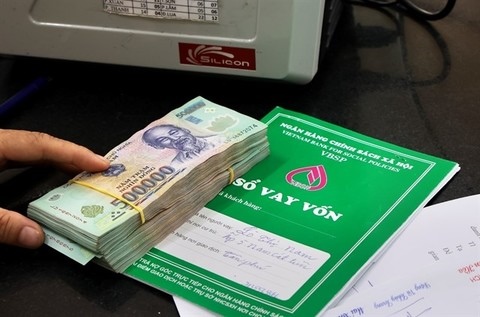Abolishing credit rooms under consideration: central bank
Abolishing credit rooms under consideration: central bank
Deputy Governor of the State Bank of Việt Nam Phạm Quang Dũng has recently said that the central bank is studying a plan to gradually abolish the credit growth quota policy following the National Assembly and the Government’s directions.

A plan to gradually abolish the credit growth quota policy is under consideration. — VNA/VNS Photo Hồng Đạt |
Credit growths were diversified in the first three quarters of this year. Some banks registered high credit growth rates, even doubling the growth rate of the entire system while some saw slow credit growth, even negative growth. This unevenness is a problem of the credit growth quota policy.
Banks with high credit growth in the first three quarters of this year included LPBank, HDBank, ACB, Techcombank, MB and Nam Á Bank. Meanwhile, there were banks with low credit growth such as ABBank, Saigonbank, Bắc Á Bank, SeABank and BVBank.
Financial reports showed that as of the end of June, ten banks posted credit growth rates of below 5 per cent over the end of the previous year.
Credit growth quota is allocated to commercial banks from the beginning of this year. On August 28, the State Bank of Việt Nam allows credit institutions which has used up 80 per cent of their quotas to automatically increase their credit ceilings based on their ranking scores.
The fact has shown that the credit growth of a bank depends not only on the credit quota granted by the central bank but also significantly on the competitiveness and health of the bank. Accordingly, banks with a healthy financial foundation, abundant capital, bad debt under control, diverse ecosystem and customer base, and advantages in real estate lending often achieves high credit growth rates.
On the contrary, banks with poor asset quality, liquidity problem, high sensitivity to market risk and uncompetitive lending interest rates cannot expand credit growth.
Dũng said that the State Bank of Việt Nam is implementing active, flexible credit policies, appropriate to the macro-economic developments and inflation to create conditions for credit access. The credit growth quotas are granted every year for credit institutions with transparency and appropriate to the macro-economic growth targets and the capacity of credit institutions.
However, he said that a roadmap for gradual abolishment of credit growth quota is under consideration.
The credit growth quota cannot be abolished at the moment because it might cause credit to grow too rapidly, which will affect the safety of the banking system as well as causing inflation risk, according to the central bank.
Economist Cấn Văn Lực said that the central bank can prevent credit growth from increasing too rapidly through reserve requirements.
“The credit growth rate can be controlled through capital adequacy ratio (CAR) without credit room quota,” he said.
If a bank wants to expand its outstanding credits, it will have to increase its equity. This will make banks with high capital safety ratios not to be constrained by credit room while put pressure on small banks with low capital safety ratios to increase their liquidity.
There are also other tools to ensure banking liquidity and prevent credit risks such as the regulation on the ratio of short-term capitals used for medium-and-long-term loans and tightening lending for customers and groups of related customers. The regulations on risk coefficients also force banks to consider sectors for lending and not to pour too much capital into risky sectors.
Credit growth quota policy has been applied in Việt Nam since 2011.
The State Bank of Việt Nam set the target for credit growth target at 15 per cent this year.
As of September 17, credit growth reached 7.38 per cent over the end of 2023.

























